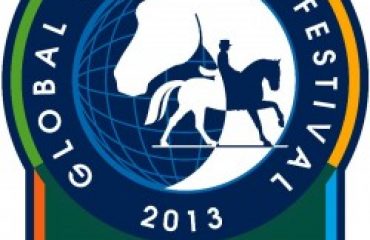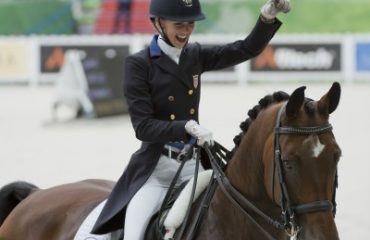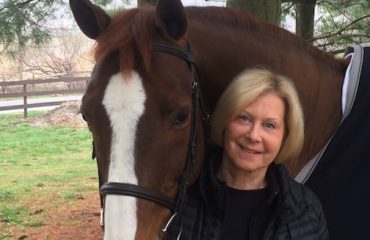 A sought-after trainer and clinician, American Olympic dressage rider Christine Traurig was born and raised on her parents’ breeding farm near Verden, Germany. She rode and trained for the Hanoverian Elite Sales in Verden before moving to the United States in 1982, where she assisted Bernie Traurig in operating an import and sales business of dressage horses and jumpers. Christine and Bernie were instrumental in establishing the Saudi Arabian Equestrian Team and Federation. With her equine partner Etienne, Christine was a member of the 2000 Sydney Olympic bronze medal team. She now operates Christine Traurig Dressage Stables, Inc. in Rancho Santa Fe, California. She conducts clinics and symposiums all over the U.S. and in 2015, was appointed to the position of USEF National Coach for Young Dressage Horses. Do you have a question you want Christine to answer? Send questions to editor@sidelinesnews.com.
A sought-after trainer and clinician, American Olympic dressage rider Christine Traurig was born and raised on her parents’ breeding farm near Verden, Germany. She rode and trained for the Hanoverian Elite Sales in Verden before moving to the United States in 1982, where she assisted Bernie Traurig in operating an import and sales business of dressage horses and jumpers. Christine and Bernie were instrumental in establishing the Saudi Arabian Equestrian Team and Federation. With her equine partner Etienne, Christine was a member of the 2000 Sydney Olympic bronze medal team. She now operates Christine Traurig Dressage Stables, Inc. in Rancho Santa Fe, California. She conducts clinics and symposiums all over the U.S. and in 2015, was appointed to the position of USEF National Coach for Young Dressage Horses. Do you have a question you want Christine to answer? Send questions to editor@sidelinesnews.com.
What are your favorite stretching exercises for the horse?
There are two I do more frequently with my horses: One is the very well known “carrot stretch” where, by holding a carrot, you ask the horse to bend and stretch its neck around back to its rib cage. The other is the front leg stretch, where you lift the front leg, gently extend it out forward and then lower it to the ground. Then repeat the same with the other front leg.
Do you take your horses on trail rides?
I think trail rides are a wonderful asset to the training schedule. It’s such a nice change in environment and routine. The horses become more confident as well as trusting, and they relax because there’s no performance pressure. I’m a firm believer in variety: Dressage horses need to train, exercise and work outside of the dressage arena. Let’s face it. After a while, that 20-by-60 arena gets pretty boring.
How would you personally describe throughness?
Throughness is the acceptance of the harmonious blend of the fundamental aids. Driving, yielding, bending, and guarding leg aids in relation to the contact (rein aids). Direction-giving, flexing, guarding (setting boundaries to overbend, controlling the outside shoulder). Throughness means when one component is dominant, it does not eliminate the submission and acceptance of the other. Relaxation and suppleness are unconditional prerequisites to achieve throughness.
What is your view on use of the whip?
The whip is a useful and, at times, essential tool in the training of a horse at all stages. The whip is an instrument, not a weapon. It should never be a substitute for the leg aids of the rider. A good rider is able to use the whip anytime to “fine tune” the reaction of the horse to the rider’s aids without ever becoming dependent on it.
How important is it for beginning dressage riders to practice entry on the center line?
It depends on how soon a rider is ready to start competing. The bottom line, though, is the entry down centerline with the halt-salute and then proceeding at the trot is the first impression the judges get of a rider and the horse: straightness, attentiveness, eagerness to perform. And there’s never a second chance for a first impression!
Do you have any tips for learning to ride a good, even circle?
A good circle starts with the rider being able connect the dots, meaning the circle points. This again means that you can navigate your horse from circle point to circle point. Turning: direction-giving rein aids supported by driving leg aids. Then add the bending aids to it, all the while sticking to the concept that a circle is the “turning and riding ahead from circle point to circle point” process while maintaining continuous bend where the horse is in alignment with the line of the circle from poll to tail.
How do you choose the best freestyle music for your horse?
When choosing music for your horse’s freestyle, it’s important that your personal taste in music is in harmony with your horse’s type and movement. The music should not overpower the horse but rather, enhance the horse’s performance and bring out the personality of the horse and the rider.













